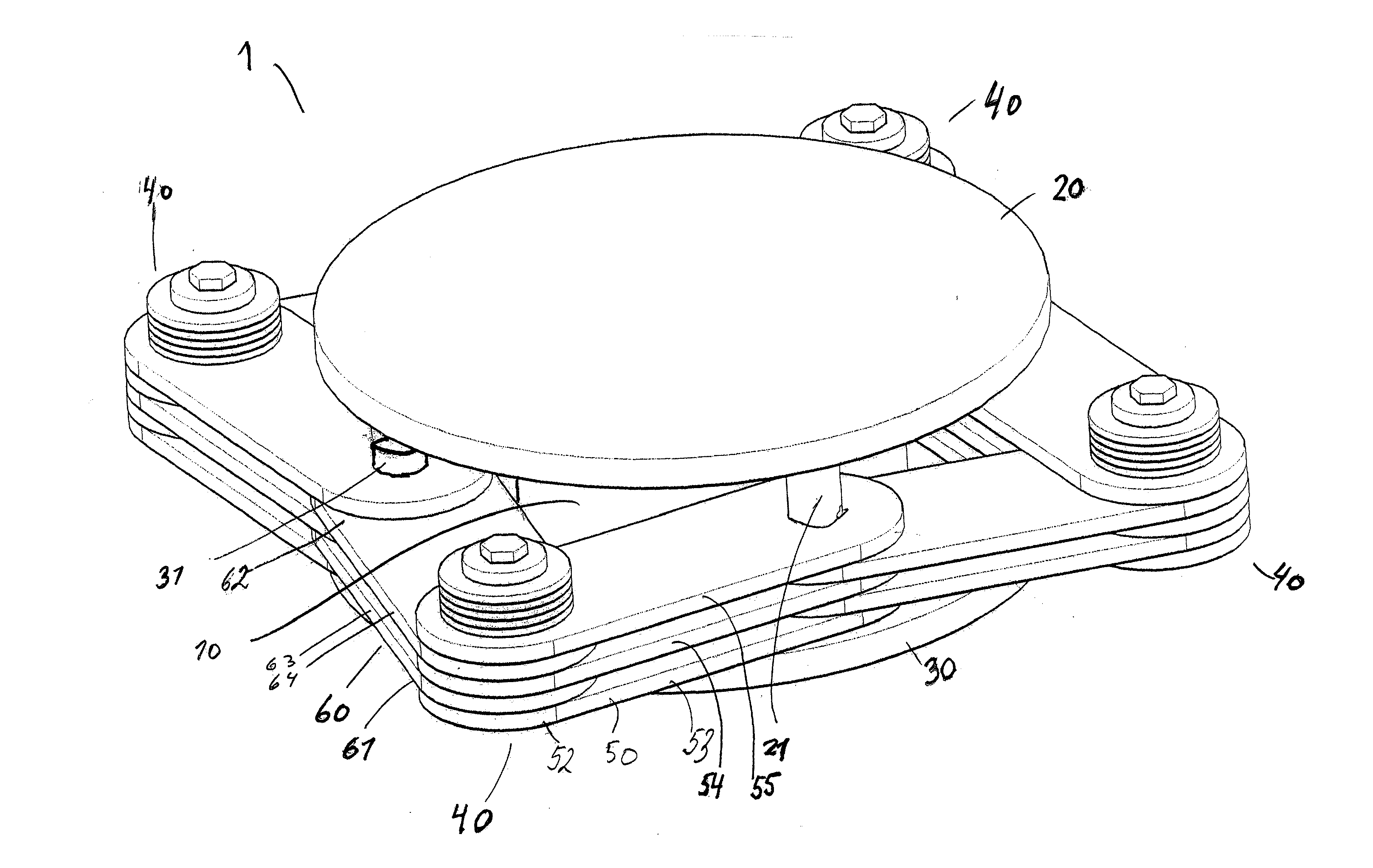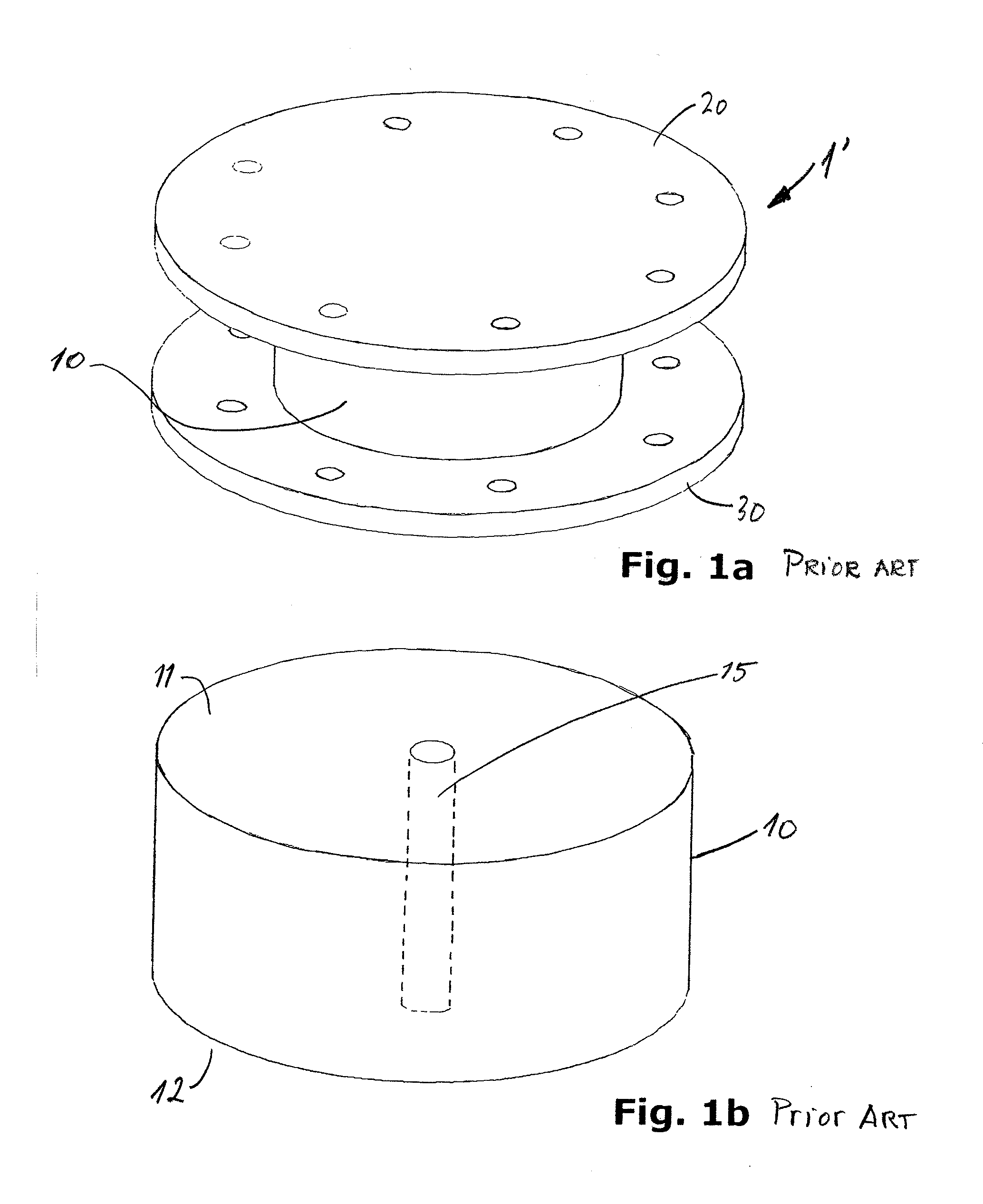Bearing for structures
a technology for bearings and structures, applied in the direction of shock absorbers, machine supports, mechanical equipment, etc., can solve the problems of poor damping movement of bearings, high rigidity, and low durability of bearings, and achieve the effect of reducing large lateral displacements
- Summary
- Abstract
- Description
- Claims
- Application Information
AI Technical Summary
Benefits of technology
Problems solved by technology
Method used
Image
Examples
Embodiment Construction
[0028]In FIG. 1A-D is shown various prior art bearings 1′. FIG. 1A shows the general principle of a prior art bearing for building structures. Such a bearing typically comprises a block of a flexible material, e.g. rubber, and a fixture element 20, 30 at each side of the block 10. The block 10 consists in general of layers of rubber and may further comprise thin layers of steel plates 16 in between as shown in FIG. 1C. In some variants, a core of e.g. lead 15 may be provided, embedded in the block 10 of rubber, as shown in FIG. 1B. Alternatively, a steel spring (not shown) or the like may be provided embedded in the rubber block.
[0029]The fixture elements 20, 30 may be steel plates, and serve for connection of the bearing to e.g. constructional elements of a building. The fixture elements 20, 30 and the block 10 are fixedly connected.
[0030]Thus, as shown in FIG. 1, the bearing comprises two steel plates one on the top and one on the bottom of the block 10.
[0031]A variant, shown in F...
PUM
 Login to View More
Login to View More Abstract
Description
Claims
Application Information
 Login to View More
Login to View More - R&D
- Intellectual Property
- Life Sciences
- Materials
- Tech Scout
- Unparalleled Data Quality
- Higher Quality Content
- 60% Fewer Hallucinations
Browse by: Latest US Patents, China's latest patents, Technical Efficacy Thesaurus, Application Domain, Technology Topic, Popular Technical Reports.
© 2025 PatSnap. All rights reserved.Legal|Privacy policy|Modern Slavery Act Transparency Statement|Sitemap|About US| Contact US: help@patsnap.com



